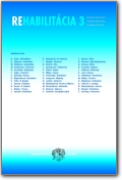COMPARISON OF THE RANGE OF MOTION IN ANKLE DORSIFLEXION BETWEEN SPRINTERS AND THE GENERAL POPULATION
DOI:
https://doi.org/10.61983/lcrh.v61i3.60Keywords:
sprint, dorsiflexion in the ankle joint, Weight Bearing Lunge Test, closed kinetic chainAbstract
We conducted the research on a group of 30 national sprinters competing for various Slovak athletic clubs, and for comparison, we used a group of 30 participants from the general population. The gender distribution was the same in both groups, with 18 men and 12 women in each. We measured the range of motion using the Weight Bearing Lunge Test. Our primary goal was to identify and compare the ankle joint mobility in dorsiflexion during a lunge in a closed kinetic chain between sprinters and the general population, with a secondary goal of identifying injury risk cases. In the sprinter group, the dorsiflexion mobility during the lunge under axial load on the right leg was measured at 41.6 degrees (SD±6.47), and on the left leg, it was 42.3 degrees (SD±6.08). In the general population group, the average dorsiflexion mobility on the right leg was 45 degrees (SD±7.54), and on the left leg, it was 44.3 degrees (SD±6.65). In the sprinter group, 36.6% of participants had been injured in the past year, compared to 23.3% in the general population group. A statistically significant difference was found between the right legs of the sprinters and the general population, favoring the general population (p<0.05). This difference was not observed for the left leg (p=0.12). Based on the measured results, we can conclude that the general population group has a greater range of dorsiflexion mobility than the sprinter group.
Published
How to Cite
Issue
Section
License
Copyright (c) 2024 journal REHABILITÁCIA

This work is licensed under a Creative Commons Attribution-NonCommercial-ShareAlike 4.0 International License.


